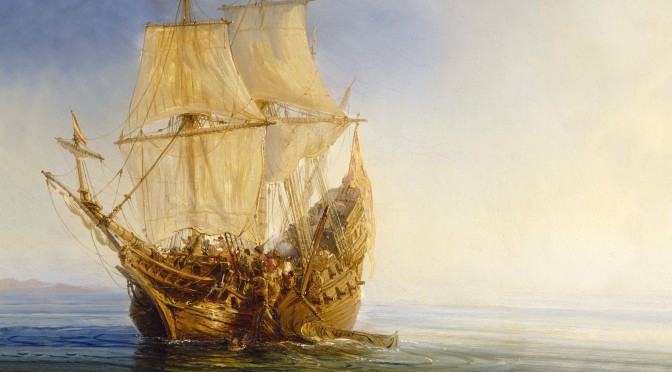As every year, the 13th October the municiaplity of Tuineje, South of Fuerteventura, celebrates with a performance that is becoming more and more popular, to commemorate the victory of the “majorera” population over the Corsairs’ attacks in 1740.
This staged battle is about the battles of “El Cuchillete” and that of “Tamasite”, and it takes place within the frame of the festivities in honour of San Miguel Arcángel, patron saint of this locality, whom the neighbours promised to never forget this date if he helped them achieve the victory.
This dates back to the middle of the XVIII C, hard times for Fuerteventura due to the huge droughts that destroyed the harvests turning Fuerteventura, which was considered “the barn of the Canary Island”, into a dry land with no water where the plants could hardly bear fruits. At those times the “majorera” population was decimated due to emigration to other islands in search of sustenance.
It turns out that in 1739 Great Britain, helped by Portugal, declares war to Spain in its Caribbean colonies, with the intention of controlling the whole market in America, which is known as The War of Jenkins’ Ear, as the trigger was that a Spanish representative cut the British Jenkins’ Ear, carrying in his ship loads of smuggled goods, so as to warn the British crown. This deed was considered as an offence by the British, who decided to start the war.
The attacks extended to the colonies in the Atlantic, The Canary Islands being target of looting by Corsairs, who were trying to get ships and loots to exchange them later on in Madeira.
At those times, the crown of Spain was not protecting The Islands with their troops regularly, so, taking advantage of the lack of population and arms in Fuerteventura, and also of how easy it was to access its coast, having so many kilometres of sandy beaches, a British corsair disembarked at Gran Tarajal beach, on October 13th 1740, and its crew managed to get to Tuineje area and plunder it.
However, the “majorero” people didn’t let the fear overcome them at that moment and, organised in militias, managed by the lieutenant colonel Sánchez Umpiérrez, and armed wit sticks and stones, decided to face the attackers in the well-known “El cuchillete” battle, which ended up with the victory of Fuerteventura’s people, who killed 33 out of the 53 attackers, and imprisoned the remaining ones.
The corsairs, very surprised not to have their troops back, attacked Fuerteventura again one month later, November 24th 1740, and this time the corsairs faced, in the well-known “Tamasite” battle, on Gran Tarajal beach, a more trained population, as their self-confidence had grown and now they also had firearms they had seized in the previous battle. By then, “los majoreros” had also developed their military strategies and they used camels, which were very abundant by then, as shields, thus stopping to a great extent the corsairs’ attacks. And once again they emerged victorious, without the help of the Spanish troops, who didn’t establish a steady military base in the islands until the XIX century, a bit too late for corsairs’ attacks.
A fragment of this island’s history was performed last October 13th, thus reviving this battle that makes the “majorero” people feel so proud of.
El Equipo de FuerteCahrter
